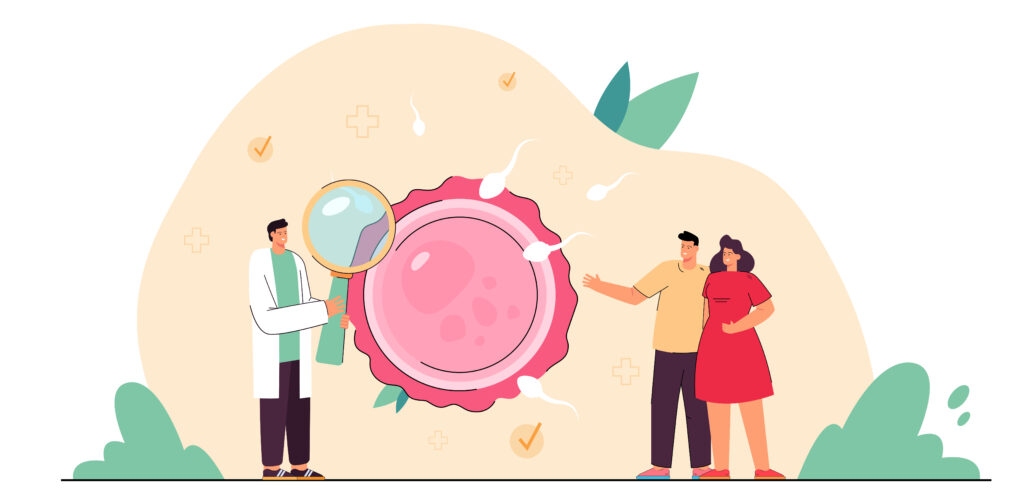What’s IUI?
Also called artificial copulation, Intrauterine copulation is an gravidity treatment done to help a childless couple to realize their dream of parenting. IUI procedure involves putting the sperm directly inside the uterus of the woman when she’s ovulating. The fertilization is made easier as the distance sperm need to cover to reach the egg is docked significantly.
To increase the chances of gestation, the sperm taken for the IUI procedure is washed and concentrated,i.e, a largely concentrated quantum of healthy and motile sperm is collected from the semen, from the mate, or the patron. In case, a womanish mate isn’t ovulating during the time of Intrauterine Insemination, she’s given certain fertility medicines to stimulate ovulation.
IUI treatment is a cost-effective, and less invasive option, done to increase the chances of gestation for couples who are unfit to conceive a child.
Why is IUI done?
Since IUI is a less invasive procedure and can treat multitudinous fertility issues, it’s tried in multiple cycles before concluding for other treatments which are more invasive like-IVF (In Vitro Fertilization), ICSI (Intracytoplasmic Sperm Injection),etc.
IUI is done to couples who have gravidity issues like-
Cervical mucus gravidity
The Cervix located at the nethermost end of the uterus produces mucus. This mucus product increases at the time of ovulation, which helps the sperm to travel easily from the vagina to the fallopian tubes, where it gets fertilized with the egg to form an embryo. But, if there’s a problem in cervical mucus like further consistence, the sperm won’t be suitable to reach the egg and fertilization won’t do.
Use of patron sperm
In certain cases, where the couple decides on using patron sperm rather of tone sperm, IUI is used toconceive.However, they’re originally fused and used in the IUI procedure, If firmed patron sperm is used.
Mild endometriosis
Endometriosis is a painful situation, in which the towel present inside the filling of the uterus wall grows outside of it. For mild endometriosis, drug is used to get an egg of good quality, and also IUI is performed.
Mild manly gravidity
IUI procedure is done by using sperm that have good quality and motility, this helps in prostrating sperm- related manly gravidity issues like low sperm- quality, volume, and motility.
Unexplained gravidity
When fertility specialists are unfit to identify the cause of gravidity, IUI is frequently used as the first volition to help achieve gestation. Ovulation induction drugs might also be used.
Other reasons for using IUI treatment are- problems in ovulation, semen mislike, and erectile dysfunction.
IUI is a favored choice of treatment for same- coitus couples, single parents, and couples who don’t want their unborn child to inherit any inheritable disfigurement from the manly mate.
What’s the procedure of IUI treatment?
Pre Procedure
Ovulation-
Before the IUI procedure, the womanish mate will be given fertility drug, which stimulates the ovaries to grow multiple follicles, in which eggs are present.
After achieving 2 to 5 follicles, the woman will be fitted with other fertility medicines to induce ovulation. All this is covered by the specialist, as it helps them in relating the correct time to perform the IUI procedure for maximum chances of success.
Sperm collection and attention-
When the womanish mate is ovulating, a semen sample will be collected from the manly mate for farther medication. For IUI medication, a process called semen washing will be performed. In this, a concentrated quantum of healthy sperm is taken out from the semen, and all the gratuitous material which could hinder IUI is excluded.
In the case of patron sperm, there’s no need for semen washing, as the sperm is formerly washed and needs no farther medication.
IUI Procedure
Once the eggs and sperm have been prepared for IUI, the womanish mate will be called to the clinic for IUI.
The croaker will fit a thin, flexible tube-catheter in the uterus through the cervix. Also using a small hype, the healthy sperm will be fitted into the tube which will directly go to the uterus, where the egg is present.
Gestation will be if the sperm fertilizes with the egg to form an embryo and gets implanted in the uterus filling.
IUI procedure is veritably lower time- consuming, it doesn’t take further than 10 to 15 twinkles to complete.
Post Procedure
Since IUI is generally not painful and doesn’t bear anesthesia administration, there’s no need to stay at the sanitarium.
Roughly after 2 weeks, the croaker will ask the womanish mate to get a gestation test done to check if the IUI treatment was successful ornot.However, the croaker might advise performing further IUI cycles, depending upon the fertility issue, If not.
What are the pitfalls involved in IUI treatment?
Intrauterine Copulation is a safe and easy procedure with minimum complications and pitfalls involved. These pitfalls are-
Multiple gravidity-IUI alone can not beget multiple gravidity. But if ovulation induction medicines are also used, the chances of multiple gravidity increases. Multiple gravidity can also lead to early labor.
Unseasonable delivery and low birth weight- Gestation through IUI can increase the threat of the baby being born beforehand ( unseasonable) with lower weight than normal.
Ovarian hyperstimulation pattern-OHS is a painful condition, during which the lady who’s entering medicines for ovarian stimulation to grow more eggs has a side effect in which the ovaries come blown andpainful.However, OHS might last for a many weeks, else, If the woman gets pregnant.
Infection-Intrauterine Copulation increases the threat of developing an infection.
Spotting-Since IUI involves passing a catheter from the cervix to the uterus, it can beget vaginal finding ( minimum), still, it generally has no effect on the chances of achieving gestation.
IUI Success Rate
IUI’s success rate is analogous to the success rate of a rich couple achieving gestation via the natural system. There are 10-20 percent chances of generality with a single cycle of IUI. As the number of IUI cycles increases, the chances of generality also increases. The use of 4 to 5 cycles of IUI increases the success rate to as high as 75.
Still, there are certain factors that determine the success rate of IUI- age of the woman, sperm quality, and medical problems. The success rate in IUI for women above the age of 40 is as low as 8, therefore IUI isn’t recommended for women above 40. IUI’s success rate is loftiest in the case of unexplained gravidity and dis ovulatory gravidity.



